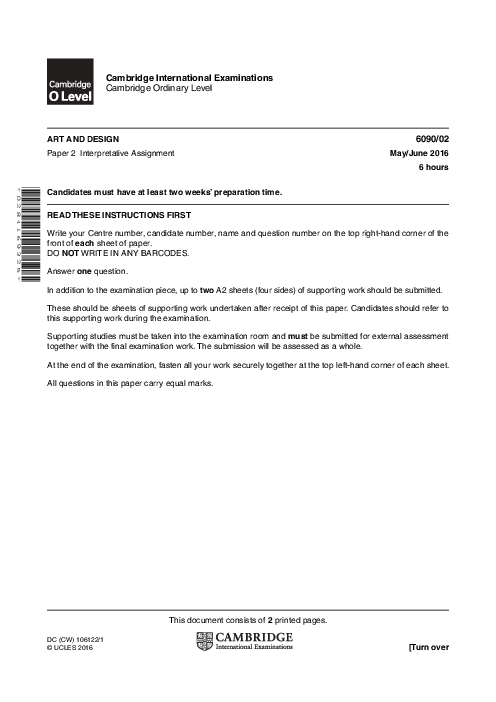Investigate how the arrangement of elements within a composition contributes to the visual impact of art.
What role does composition play in the overall impact of a piece of art?
پاسخ ها: 4
The composition of a piece of art plays a crucial role in its overall impact and effectiveness. It refers to the arrangement, organization, and placement of elements within the artwork. Here are some key aspects of the role of composition: 1. Visual Flow and Direction: Composition guides the viewer's eye through the artwork, creating a visual flow and directing attention to specific areas or focal points. The arrangement of elements, such as lines, shapes, and colors, can lead the viewer's gaze and create a sense of movement or rhythm. A well-composed artwork ensures that the viewer's attention is directed intentionally, enhancing the overall impact and message of the piece. 2. Balance and Harmony: Composition helps achieve a sense of balance and harmony within the artwork. It involves the distribution of visual weight and the arrangement of elements to create a feeling of equilibrium. Whether through symmetrical, asymmetrical, or radial balance, a well-balanced composition creates a sense of stability and visual satisfaction. It ensures that no single element dominates the composition, allowing the viewer to engage with the artwork more comfortably. 3. Emphasis and Hierarchy: Composition allows artists to establish emphasis and hierarchy within the artwork. By manipulating the size, placement, and contrast of elements, artists can guide the viewer's attention and create a focal point or points of interest. This helps convey the intended message or narrative and ensures that important elements are given prominence. Effective composition ensures that the viewer's focus aligns with the artist's intended emphasis. 4. Unity and Cohesion: Composition plays a vital role in creating unity and cohesion within the artwork. It involves the arrangement and relationship of elements to create a sense of visual coherence. A well-composed artwork demonstrates a harmonious connection between different elements, such as color, shape, texture, and space. This unity enhances the overall impact and aesthetic appeal of the piece. 5. Emotional and Narrative Impact: Composition can evoke specific emotions and enhance the narrative impact of the artwork. The arrangement of elements, use of perspective, and manipulation of space can create a particular mood or atmosphere. Artists can use composition to convey a story, evoke a specific emotional response, or communicate a concept or idea effectively. In conclusion, composition plays a vital role in the overall impact of a piece of art. It guides the viewer's eye, establishes balance and harmony, creates emphasis and hierarchy, ensures unity and cohesion, and enhances the emotional and narrative impact of the artwork. A well-composed artwork engages the viewer, communicates the artist's intention, and leaves a lasting impression.
Composition is the invisible backbone of an artwork, the puppeteer directing your gaze and sculpting your experience. It's the dance of lines, shapes, and textures, their placement a silent symphony guiding you through the visual narrative. A strong composition draws you in like a gravitational pull, holding your attention captive within its frame. It lingers in your mind long after you look away, an echo of the emotions it evoked. Imagine a portrait where the subject's eyes are off-center, adrift in a void. Discomfort stirs, a jarring disconnect between intention and execution. Or consider a bustling cityscape, its elements haphazardly strewn - chaos reigns, overwhelming and uninviting. Now, picture a landscape where a solitary tree stands against a vast sky, its silhouette anchored by a golden horizon. A sense of awe washes over you, the composition whispering tales of resilience and solitude. Composition is the artist's secret language, weaving meaning through placement and proportion. It can evoke tension with skewed lines, ignite passion with vibrant contrasts, or evoke tranquility with harmonious balance. It's the bridge between the artist's intent and the viewer's interpretation, the whisper that translates emotion into form. So, the next time you stand before a masterpiece, don't just admire the brushstrokes or the subject matter. Delve into the composition, let it guide your journey, and unlock the hidden story it tells. For in the depths of that silent symphony lies the true soul of the art.
Composition is the backbone of artistic expression, shaping the impact and message of a piece. It orchestrates elements like line, color, form, and space, determining how they interact to convey emotions, ideas, or stories. A well-crafted composition guides the viewer's eye, emphasizing focal points, creating balance or tension, and influencing the emotional response. It's the structural foundation that bridges the gap between an artist's intent and the audience's interpretation, dictating the visual journey and depth of engagement within a piece of art.
Composition is essential in guiding the viewer's eye and conveying the intended message. Factors like balance, symmetry, and focal points are used to create a harmonious and visually engaging artwork.





